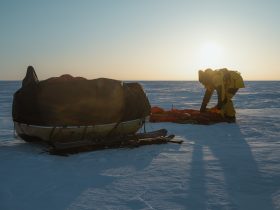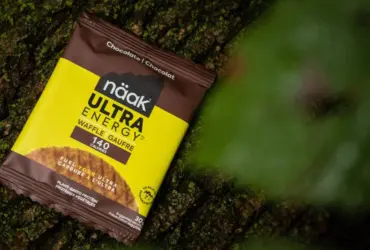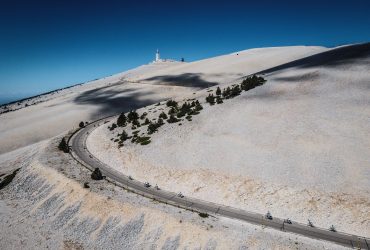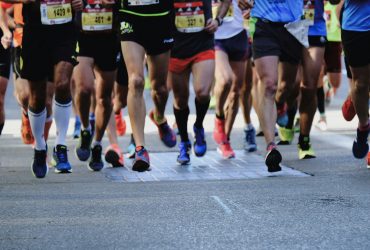To avoid the crowded surf spots of France this summer, here are some isolated islands to plan your next surf trip.
Hossegor, Pipeline, Jaws, Nazaré, Margaret River... In the world of surfing, some names come up more than others when it comes to evoking the discipline's most emblematic spots. But these spots are often crowded, and locals obviously have priority over visitors to enjoy them, as is customary in the water when a "foreigner" discovers the place. In the interests of peace of mind, and to whet your appetite for more secret locations, we've listed below five secluded islands where you can enjoy the waves while avoiding the crowds at their peak. Of course, some destinations require a great deal of organization and a substantial budget. But paradise is just around the corner...
Nias Island (Indonesia)
Located 120 kilometers off the coast of Indonesia, Nias Island (in the local language Tanö Niha, which means "land of human beings") is populated by just under 800,000 inhabitants and the first traces of human presence on the island date back to 12,000 years before our era. This high population density is not, however, synonymous with overcrowded spots, as these are numerous on the island. Some examples are Sorake Bay beach near the town of Tuluk Dalam, Lagudri Bay in the south of the island or the Banyak Islands archipelago, made up of 60 small islands north of Nias. The best time to surf there is from May to September. To get there, you can take advantage of the island's only airport located in Gunungsitoli from where national airlines offer daily flights from Medan, the capital of Sumatra.
Sieh dir diesen Beitrag auf Instagram an
Tjornuvik (Faroe Islands)
Between Iceland and Great Britain, the Faroe Islands lie isolated in the middle of the Atlantic. This archipelago is made up of 18 rocky volcanic islands, including Streymoy. This is the location of the Tjornuvik spot, named after the village where 70 people live year-round. Like many Faroese spots, the beach is made of black sand and offers a beach break alternating between rights and lefts, much to the delight of local surfers and the (rare) tourists who visit. The narrow bay is very well exposed for the discipline and offers good conditions for creating waves of all levels. Let's hope the weather holds out, which is not always the case in the archipelago. To get there, take a ferry after landing at Vagar airport on the neighboring island.
Kolimbithra (Greece)
Once you arrive at Athens or Mykonos airport, a ferry will take you to the island of Tinos in the Aegean Sea. Little frequented by foreign tourists, the island has only a little more than 5,000 inhabitants for an area of almost 200 km². As surfing is far from being the most popular sport in Greece, there is little chance that many of you will be in the water at the Kolimbithra spot. The wind often hits this sandy beach, which is located between two long peninsulas. The waves are not huge, but enough to enjoy nice sessions during several months of the year. This sand bank breaks in right and left.
Easter Island (Chile)
Famous for its monumental Moai statues, Easter Island belongs to Chile. Yet the Chilean coast lies more than 3,500 kilometers to the west. Easter Island is the most isolated inhabited place in the world. If you want to get there, you'll need to be patient. You can fly there from Santiago in Chile or from Papeete in French Polynesia. On Easter Island, surfing has made a name for itself among the locals and the 80,000 visitors who arrive each year on this island lost in the middle of the Pacific. There are several well-known spots, including Pea Beach near the town of Hanga Roa (capital of Easter Island) and the bays of Paka Ai and Papa Tangaroa. The Koe Koe spot at Akahanga is one of the most powerful, with waves up to six meters high. Four years ago, surfers Ramon Navarro, Cristian Merello, Uti Araki, Natxo Gonzalez and Guillermo Satt went there on a surf trip which is recounted in the film below.
Lofoten (Norway)
A wetsuit is obviously mandatory to surf on these islands in the north of Norway. If the Lofoten are more famous for their snow spots, it is also possible to surf there. For a few decades now, locals have been practicing the discipline despite the harsh conditions (watch the movie below about the surfing pioneers in Lofoten). At 160 km north of the Arctic Circle, Lofoten offers sublime spots in an almost totally preserved nature. Unstad is the most famous spot in the archipelago and attracts many pro surfers, especially in winter when the waves are the biggest. From France, you must first go to Bodo, a Norwegian town located in front of Lofoten before taking a ferry to reach the islands.










